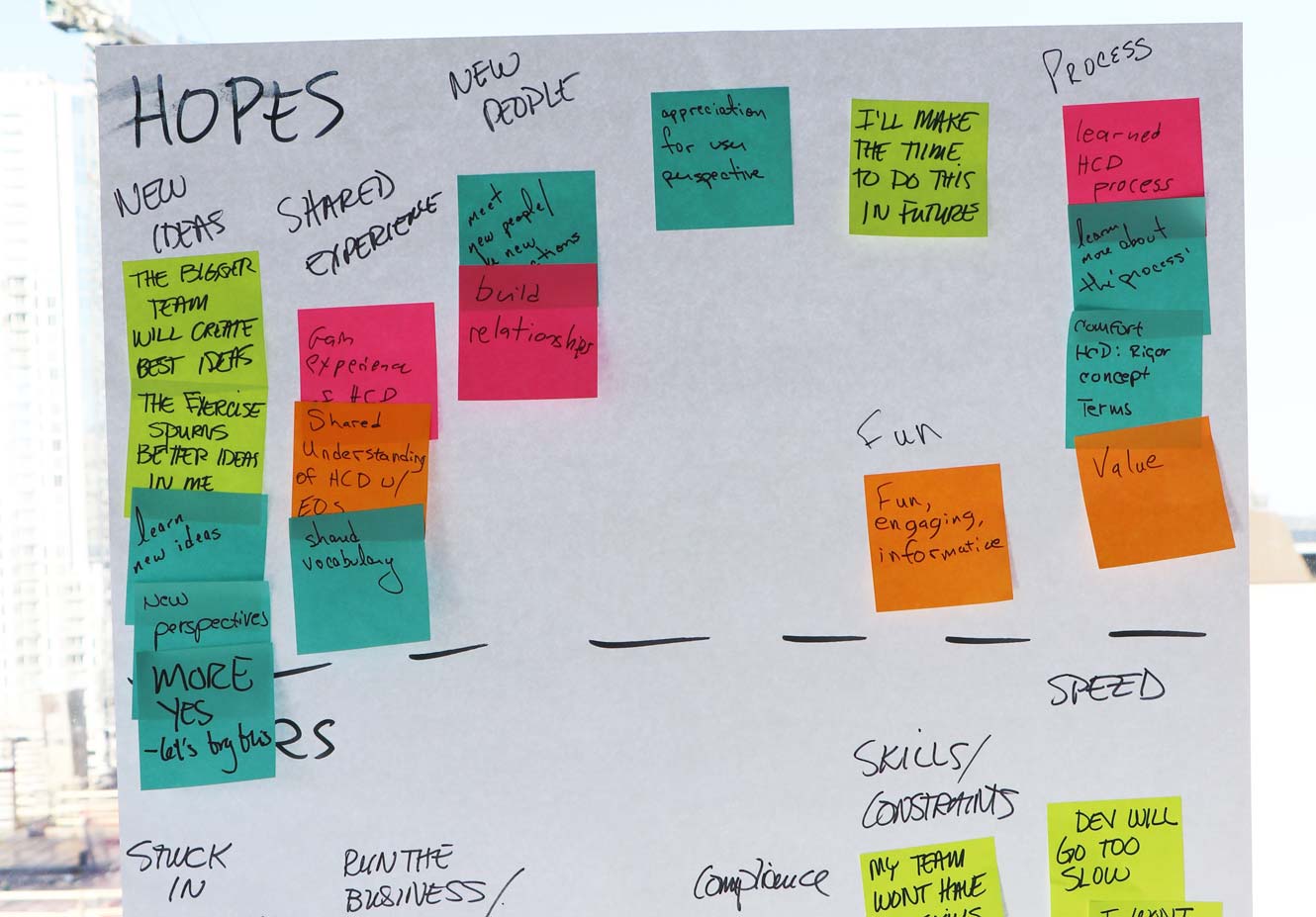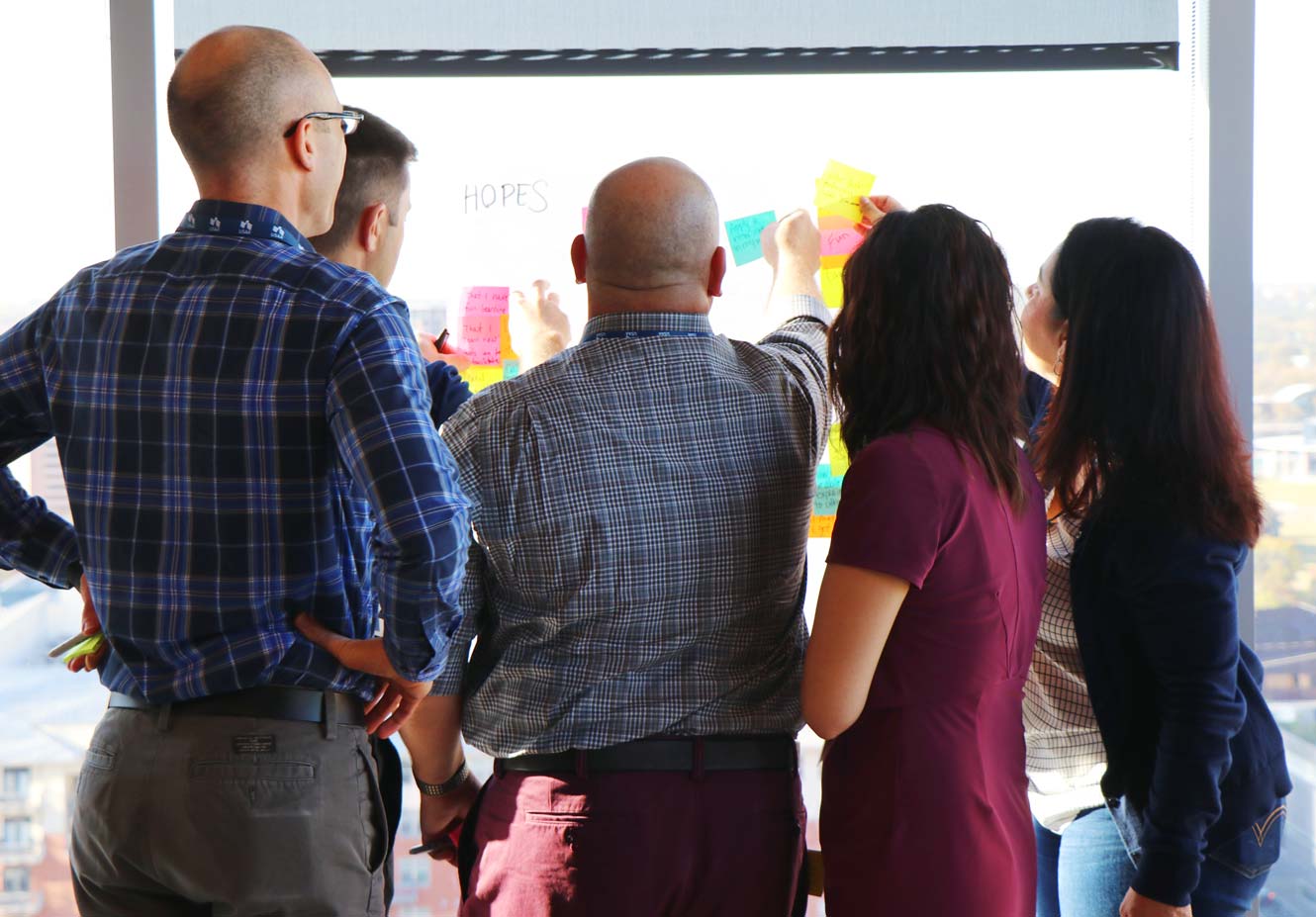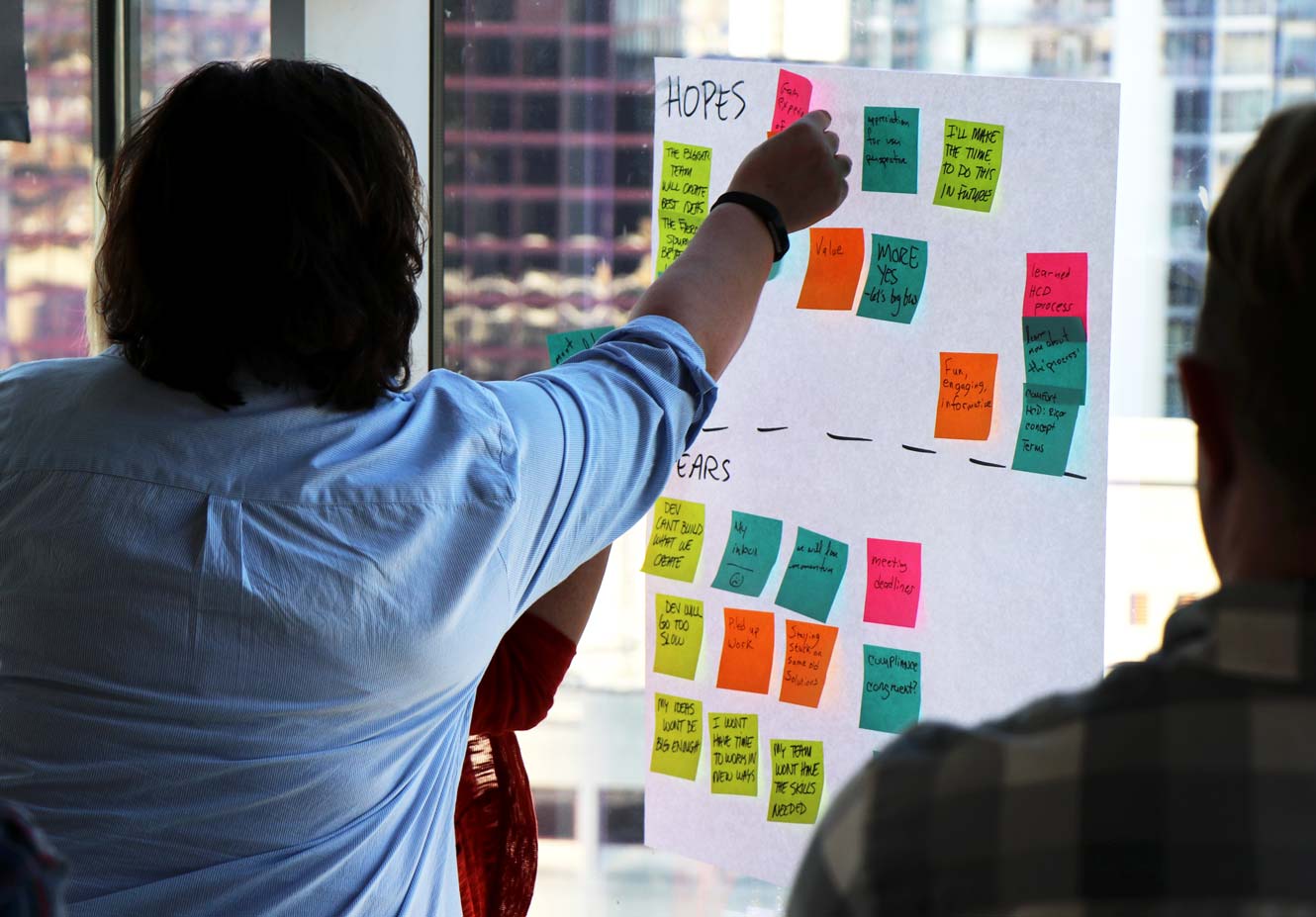Hopes & Fears
Hopes and Fears can be used to articulate a team's goals and to expose any underlying concerns.
This activity empowers every team member to vocalize their expectations and concerns about an upcoming or on-going project so the effort is more likely to succeed. By sharing hopes and fears, team members develop shared outcome expectations, address team members' concerns with empathy, and can better anticipate work derailers.
You can use Hopes & Fears to:
- Start a project, kick-off a workshop or welcome new members to the team on the right foot.
- Create a shared understanding of goals and concerns about upcoming projects.
- Pro-actively empathize with and address team anxiety about starting an effort.
- Cultivate shared norms on what the team hopes to accomplish, and what sensitivities they should be aware of from their teammates.
- Reset a team or effort that is off-track.
Prerequisites
A team can complete Hopes & Fears once they have:
- Created a safe space, free from judgement. This method is less effective if the participating team does not share mutual trust.
This Is What It Looks Like



Let’s Get Started
1 Write a prompt.
Write a question to give your team something to react to. For example, at the start of our HCD sessions, we ask participants, "What hopes and fears do you have for this HCD session?"
Other examples of Hopes & Fears prompts:
- "What hopes and fears do you have for this upcoming Sprint?"
- "What hopes and fears do you have for the new phase of Disciplined Execution?"
- "What hopes and fears do you have for the launch phase happening in the next quarter?"
2 Create a canvas.
Divide a white board or large easel sheet into two sections: "Hopes" on top and "Fears" on bottom. This is where your team will plot their stickies.
3 Add stickies.
Set a timer for 3-5 minutes and invite the team to respond to the prompt. Ask the team to create stickies, on their own, in response to the prompt. As you complete each sticky, add it to the canvas in the corresponding section.
Tip
Do this activity without talking. Asking the team not to talk at this point will prevent group think. It can be helpful to play music in the background.
Bonus Points
If the team starts to slow down, encourage them to build on each others stickies. Encourage quantity over quality.
4 Synthesize.
Group stickies with the same or similar idea next to each other. Work as a team and ask clarifying questions if necessary. Feel free to talk out loud while you work and share the reasoning behind each group. Once you’re done grouping, label each group with a theme in 5-10 words.
5 Summarize.
Transfer the summary labels to a bulleted list on a separate sheet of paper. What highlights would you share with someone outside the group? Make sure the list can be understood by team members or stakeholders that didn't attend the session.Next Steps
Post the Hopes and Fears Summary in your team's co-working space. The summary can be used to align the team during major project milestones. Use the summary during project retros to track which Hopes and Fears came true.